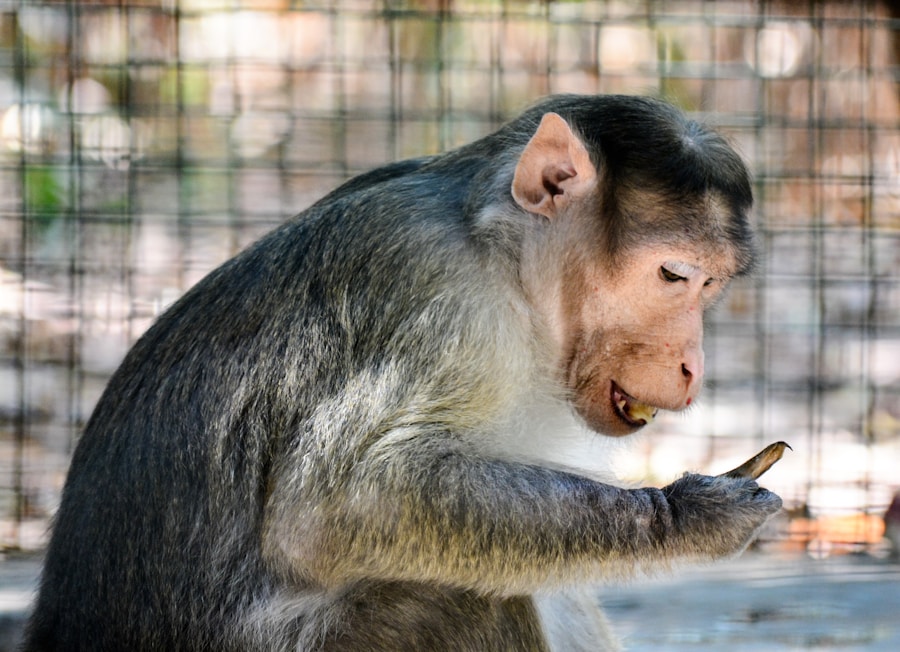Animal behavior is a fascinating field of study that encompasses the myriad ways in which animals interact with their environment, other organisms, and themselves. This discipline examines the actions and reactions of animals, ranging from the simplest reflexes to complex social interactions. Understanding animal behavior is crucial not only for biologists and ecologists but also for conservationists, veterinarians, and anyone interested in the natural world.
The study of animal behavior provides insights into the evolutionary adaptations that have shaped species over time, revealing how behaviors contribute to survival and reproduction. The complexity of animal behavior can be observed across a wide range of species, from solitary creatures like the octopus to highly social animals such as elephants and primates. Each species exhibits unique behaviors that are often tailored to their specific ecological niches.
For instance, migratory birds demonstrate remarkable navigational skills, while pack-hunting wolves display intricate social structures and cooperative strategies. By examining these behaviors, researchers can glean valuable information about the underlying mechanisms that drive them, including genetic, environmental, and social factors.
Key Takeaways
- Animal behavior is a complex and fascinating field that involves the study of how animals interact with their environment and each other.
- Genetics play a significant role in shaping animal behavior, influencing traits such as aggression, sociability, and mating preferences.
- Environmental factors such as food availability, temperature, and habitat can greatly impact animal behavior and survival.
- Social interactions and communication are essential for animals to establish hierarchies, find mates, and protect themselves from predators.
- Learning and memory are crucial for animals to adapt to their surroundings, remember important information, and improve their chances of survival.
The Role of Genetics in Animal Behavior
Gene-Environment Interactions
Moreover, the field of behavioral genetics has expanded our understanding of how genes interact with environmental factors to produce specific behaviors. The concept of gene-environment interactions highlights that while certain behaviors may have a genetic basis, they can be significantly influenced by external conditions.
Domesticated Animals and Their Environments
For instance, the behavior of domesticated animals often reflects both their genetic heritage and the environments in which they are raised. Research on dogs has shown that breeds developed for specific tasks, such as herding or hunting, exhibit innate tendencies that are reinforced through training and socialization.
Environmental Influences on Animal Behavior

The environment in which an animal lives is a critical determinant of its behavior. Factors such as habitat type, availability of resources, climate conditions, and presence of predators all play significant roles in shaping how animals behave. For example, animals living in resource-rich environments may exhibit more complex social structures and cooperative behaviors compared to those in harsher conditions where competition for resources is fierce.
The behavior of African elephants is a prime example; in areas where food and water are abundant, these elephants form larger herds and engage in more intricate social interactions. Additionally, environmental changes can lead to behavioral adaptations over time. Climate change, habitat destruction, and urbanization are altering the landscapes in which many species live, forcing them to adapt their behaviors to survive.
For instance, some bird species have altered their migration patterns in response to changing temperatures and food availability. The great tit (Parus major) has been observed shifting its breeding season earlier in the year as spring temperatures rise, demonstrating how environmental factors can directly influence reproductive behaviors.
Social Interactions and Communication in Animal Behavior
| Animal Species | Social Interaction | Communication Method |
|---|---|---|
| Chimpanzees | Play, grooming, and sharing food | Facial expressions, vocalizations, and body language |
| Honeybees | Dance communication | Waggle dance and round dance to communicate food sources |
| Elephants | Physical touch and vocalizations | Rumbling vocalizations and tactile communication through trunk touching |
| Meerkats | Cooperative foraging and grooming | Alarm calls to warn the group of predators |
Social interactions are fundamental to understanding animal behavior, particularly in species that live in groups. Communication plays a vital role in these interactions, allowing animals to convey information about food sources, danger, and social hierarchies. Various forms of communication exist across the animal kingdom, including vocalizations, body language, chemical signals, and visual displays.
For example, the complex songs of birds serve not only to attract mates but also to establish territory and communicate with other members of their species. In social species like wolves or primates, communication is essential for maintaining group cohesion and coordinating activities such as hunting or grooming. The intricate vocalizations of dolphins illustrate this point; they use a variety of clicks and whistles to communicate with one another while hunting or navigating their environment.
Furthermore, research has shown that some species possess unique dialects or calls that can vary by region or group, highlighting the importance of social learning in shaping communication patterns.
Learning and Memory in Animal Behavior
Learning is a critical component of animal behavior that allows individuals to adapt to their environments based on past experiences. Various forms of learning exist among animals, including habituation, classical conditioning, operant conditioning, and observational learning. For instance, studies on rats have demonstrated that they can learn to navigate mazes through trial-and-error methods (operant conditioning) or by observing other rats (observational learning).
This ability to learn from experience enhances their chances of survival by enabling them to avoid dangers or locate food more efficiently. Memory also plays a crucial role in animal behavior by allowing individuals to retain information about their environment and experiences over time. The capacity for memory varies widely among species; some animals exhibit remarkable long-term memory capabilities.
For example, Clark’s nutcracker, a bird known for its exceptional spatial memory, can remember the locations of thousands of hidden seeds for months at a time. This ability is vital for their survival during winter months when food sources are scarce.
The Role of Hormones in Animal Behavior

Hormones significantly influence animal behavior by regulating physiological processes that affect mood, motivation, and actions. The endocrine system releases hormones that can trigger specific behaviors related to reproduction, aggression, parental care, and stress responses. For instance, testosterone is often associated with aggressive behaviors in many species; higher levels of this hormone can lead to increased territoriality and competition among males during mating seasons.
In addition to aggression and mating behaviors, hormones also play a role in nurturing behaviors. Oxytocin, often referred to as the “bonding hormone,” is released during social bonding activities such as grooming or nursing in mammals. Research has shown that oxytocin levels increase during positive social interactions and can enhance trust and cooperation among individuals within a group.
This hormonal influence underscores the intricate connections between physiology and behavior in shaping social dynamics within animal populations.
The Evolution of Animal Behavior
The evolution of animal behavior is a complex process shaped by natural selection and adaptation over time. Behaviors that enhance an individual’s chances of survival and reproduction are more likely to be passed on to future generations. This evolutionary perspective helps explain why certain behaviors are prevalent within specific species or ecological niches.
For example, the elaborate courtship displays seen in many bird species serve not only to attract mates but also signal genetic fitness to potential partners. Evolutionary biologists study behavioral adaptations through various lenses, including comparative analysis across species and examination of fossil records. The concept of evolutionary stable strategies (ESS) illustrates how certain behaviors can become fixed within populations due to their effectiveness in specific contexts.
For instance, cooperative breeding observed in some bird species may evolve as a strategy to enhance offspring survival rates by pooling resources among group members.
Studying and Understanding Animal Behavior
The study of animal behavior employs a variety of methodologies ranging from observational studies in natural settings to controlled experiments in laboratory environments. Ethology, the scientific study of animal behavior in natural contexts, emphasizes understanding behaviors as they occur in the wild. Researchers often utilize techniques such as focal sampling or video recording to gather data on specific behaviors over time.
In contrast, experimental approaches allow scientists to manipulate variables and observe resulting changes in behavior under controlled conditions. For example, researchers might alter environmental factors such as food availability or social group composition to assess their impact on foraging strategies or social interactions among animals. Advances in technology have further enhanced our ability to study animal behavior; tools such as GPS tracking devices and remote cameras provide valuable insights into movement patterns and social dynamics without disturbing natural behaviors.
Understanding animal behavior is not only essential for academic research but also has practical implications for wildlife conservation efforts and animal welfare practices. By comprehending how animals interact with their environments and each other, we can develop more effective strategies for preserving biodiversity and ensuring the well-being of domesticated animals. As our knowledge continues to grow through ongoing research and technological advancements, we gain deeper insights into the complexities of animal behavior and its significance within the broader context of ecology and evolution.












